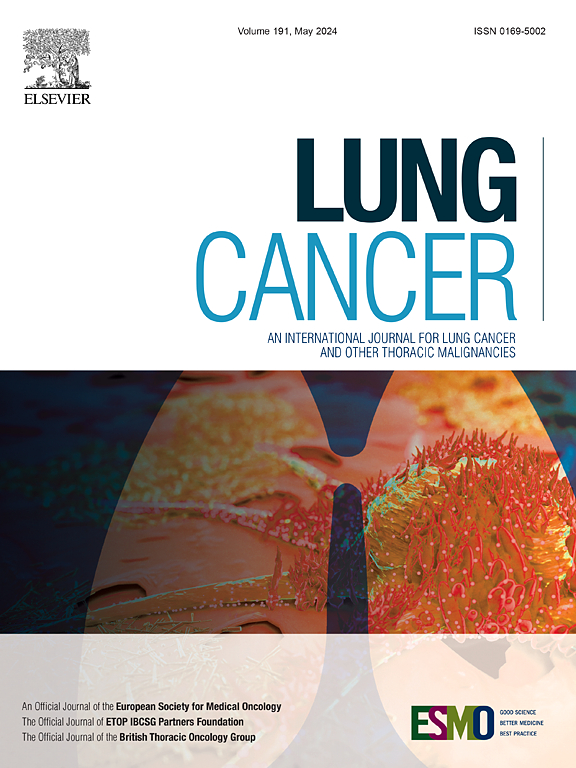MRD status combined with TNM staging optimizes postoperative prognostic stratification in non-small cell lung cancer: a meta-analysis and systematic review
IF 4.4
2区 医学
Q1 ONCOLOGY
引用次数: 0
Abstract
Objective
To investigate survival differences based on MRD status at different landmarks and tumor staging in patients with early-stage non-small cell lung cancer (NSCLC) following surgical resection. Methods: Data from six studies including 867 early-stage NSCLC patients who underwent surgery were summarized. Patients were grouped according to MRD status at different detection time points and tumor staging. Survival differences among subgroups were evaluated using the Kaplan-Meier method, and statistical significance was determined through the log-rank test.
Result
MRD-negative patients exhibit significantly better RFS and OS compared to MRD-positive patients. Based on MRD status at 3–7 days and 30 days post-surgery, combined with TNM staging, we propose a novel four-category prognostic stratification system centered on post-surgery dual-detection timepoints. This stratification system outperforms the traditional TNM staging and is divided into four groups: Group A: Post-surgery dual-negative with Stage I disease; Group B: Post-surgery dual-negative with Stage II disease; Group C: Post-surgery dual-negative with Stage III disease or MRD-positive at 3–7 days but negative at 30 days post-surgery (positive-to-negative conversion);Group D: Post-surgery dual-positive or MRD-negative at 3–7 days but positive at 30 days post-surgery (negative-to-positive conversion).The RFS outcomes are ranked as Group A > Group B > Group C > Group D. Notably, Group D has worse RFS than Stage III patients.
MRD状态结合TNM分期优化非小细胞肺癌术后预后分层:一项荟萃分析和系统回顾
目的探讨早期非小细胞肺癌(NSCLC)手术切除后不同标志物和肿瘤分期MRD状态的生存差异。方法:总结6项研究的数据,包括867例接受手术的早期非小细胞肺癌患者。根据不同检测时间点的MRD状态及肿瘤分期对患者进行分组。亚组间生存差异采用Kaplan-Meier法评估,log-rank检验确定差异有统计学意义。结果mrd阴性患者的RFS和OS明显优于mrd阳性患者。基于术后3-7天和30天的MRD状态,结合TNM分期,我们提出了一种以术后双检测时间点为中心的新型四类预后分层系统。该分层系统优于传统的TNM分期,分为四组:A组:术后双阴性伴I期疾病;B组:术后双阴性伴II期疾病;C组:术后双阴性伴III期疾病或mrd阳性3-7天,但术后30天阴性(阳性向阴性转化);D组:术后双阳性或mrd阴性3-7天,但术后30天阳性(阴性向阳性转化)。RFS结果分为A组;B组>;C组>;值得注意的是,D组的RFS比III期患者更差。
本文章由计算机程序翻译,如有差异,请以英文原文为准。
求助全文
约1分钟内获得全文
求助全文
来源期刊

Lung Cancer
医学-呼吸系统
CiteScore
9.40
自引率
3.80%
发文量
407
审稿时长
25 days
期刊介绍:
Lung Cancer is an international publication covering the clinical, translational and basic science of malignancies of the lung and chest region.Original research articles, early reports, review articles, editorials and correspondence covering the prevention, epidemiology and etiology, basic biology, pathology, clinical assessment, surgery, chemotherapy, radiotherapy, combined treatment modalities, other treatment modalities and outcomes of lung cancer are welcome.
 求助内容:
求助内容: 应助结果提醒方式:
应助结果提醒方式:


